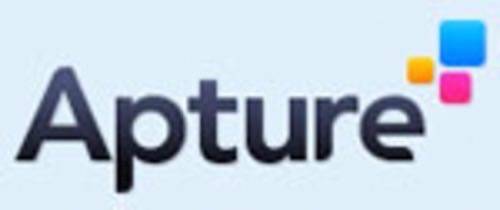The most obvious feature of Apture is that it is a pop-up technology. Apture is a Javascript plug-in for publishers that adds contextual information to links – via pop-ups which display when users hover over or click on them. However, because of its association with pop-ups, Apture thinks it’s gotten a bad rap. Many people dislike other pop-up products such as CoolPreviews, Snap and a new Microsoft product we covered recently called Gaze. Why? Because pop-ups can disrupt a user’s browsing experience and are sometimes even regarded as a nuisance. We spoke to Apture co-founder and CEO Tristan Harris, to find out what makes Apture different.

Here at ReadWriteWeb, we’ve been skeptical of how pop-up technology has been used over the years. But we’re also optimistic about the potential for pop-ups to present rich contextual information to readers, as long as it’s done in an unobtrusive way.
Apture is a similar service to Panels.net, which pops up useful contextual data about companies and people. Probably what differentiates Apture is that it makes great use of rich media, such as video and audio. The product was created by 4 Stanford computer science graduates and it is very much targeted at media publishers, from small bloggers to big media companies. One of the customers using Apture is WashingtonPost.com, which we will take a look at in this post.
Examples: Washington Post & Brand South Africa Blog
Apture enables publishers to offer extra third-party content on their website, without the user having to leave the host site. For example in the screenshot below Washington Post has a link to Senator Amy Klobuchar – when the reader hovers over it, up pops up a new window with not only biographical information about Klobuchar, but details on what she’s voted on and financial disclosures. Many of the links in the pop-up lead to more information presented inside that same window (the only links which open a new browser window are the blue official website links). It’s rather impressive how much extra information is offered in just one little pop-up.

What stood out most to us about Apture though is its ability to present – and manipulate – multimedia. Not only can publishers add links to videos inside an Apture pop-up, but they can select which point in the video to jump to. For example if there’s a quote from a Barack Obama video that is relevant to readers, and it starts 5 minutes and 10 seconds into the video, you can link to and start the video at that 5:10 mark. Below is an example from a government blog in South Africa. You can also see that it opens a separate Apture window for the video – you can have multiple Apture windows on the same page.

Human Editing Trumps Algorithms
Another interesting aspect about Apture is that it relies on publishers to make the ultimate decisions about which media items to add to a webpage. In other words, algorithms don’t do all of the work – although they do select the sources for the editors to select from. This is a point of difference from products such as Snap and Adaptive Blue’s SmartLinks, which are both fully automated. How Apture works from the publisher’s perspective is that editors (at e.g. Washingtonpost.com) select related content, as suggested by Apture’s algorithms. The editing work is currently done post-publishing, because Apture hasn’t yet found a way to easily integrate into multiple CMSs – although it is working on solving that issue. Right now though, Apture works as a javascript plug-in on the host site, and editors can add pop-ups via their Apture account.
According to Apture CEO media Tristan Harris, Apture has “lowered the cost of inserting a [multimedia] link”. He said that the majority of journalists are not technical, in terms of HTML and related web technologies, but that Apture is simple ‘point and click’ and so it makes it very easy for them to add multimedia. We asked Harris if there is much Semantic technology happening in the back-end. He replied that they do some “semantic guiding” – e.g. when on a book page, Apture pushes up book content in the results presented to editors. But overall, Harris likes to think of Apture as a “hyper-relevant web” technology, rather than semantic web.
Conclusion: Useful and Visually Appealing
We came away impressed by Apture, because of the amount of multimedia that can be packed into such a little pop-up. Also the end-user experience is sophisticated – readers on washingtonpost.com and other Apture sites can see rich, relevant, contextual content from the likes of Wikipedia, YouTube and Flickr without leaving the host site. Apture is positioning itself as “more than a pop-up site”. Actually we still think it’s a pop-up technology, but we have to say that it’s a sophisticated and useful application of it!
Apture is free for bloggers and works via one line of javascript at the bottom of your site. Although Apture’s business model was initially advertising, now the company has turned its attention to premium offerings for big media companies. It is looking for monthly subscription fees from large media companies, in exchange for premium services.
Tell us what you think of Apture – and indeed pop-up technologies in general – in the comments.

















